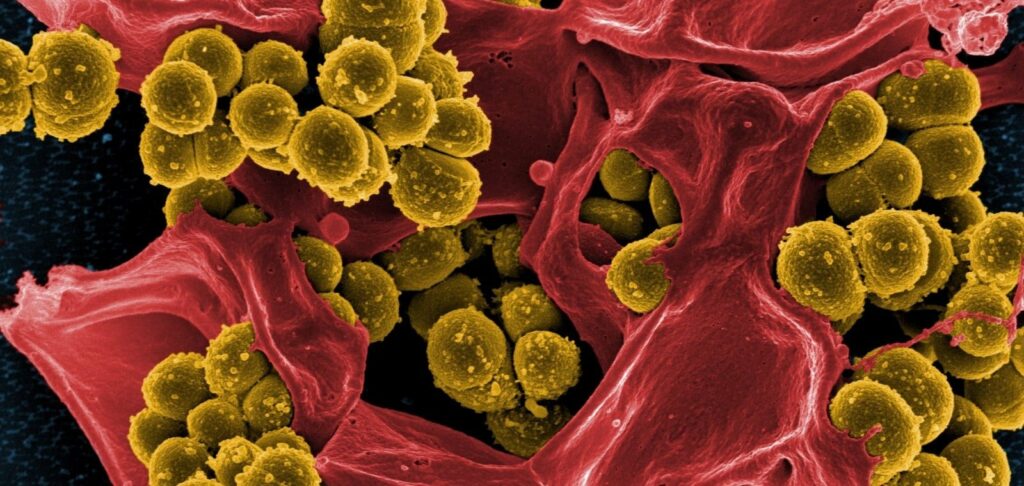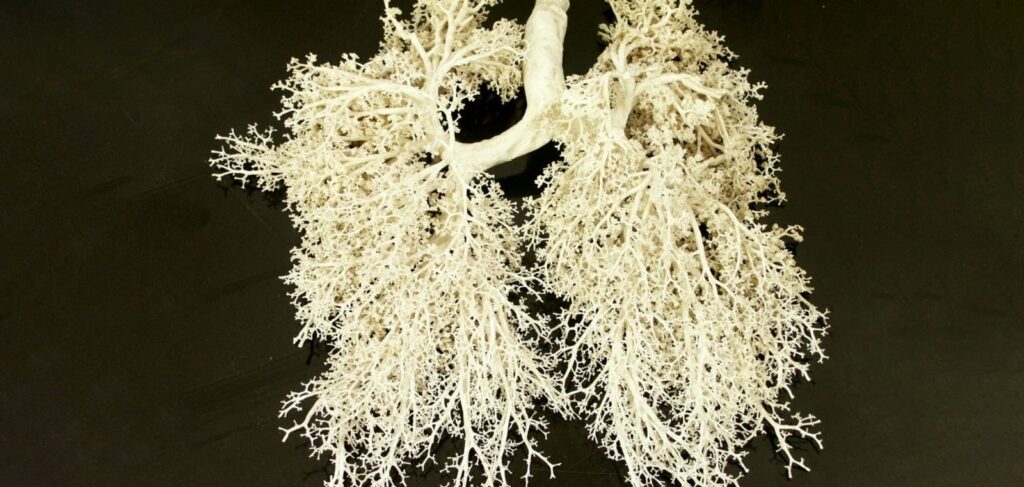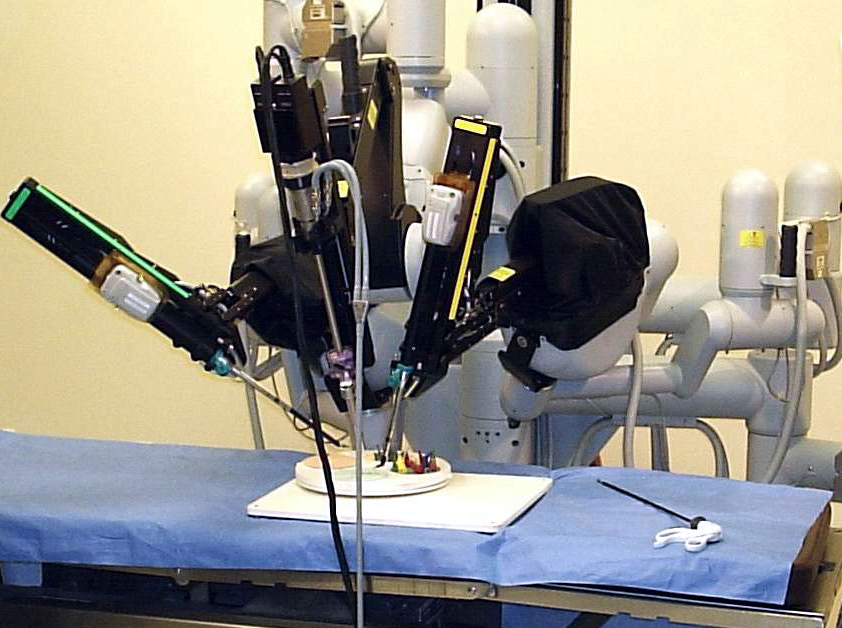
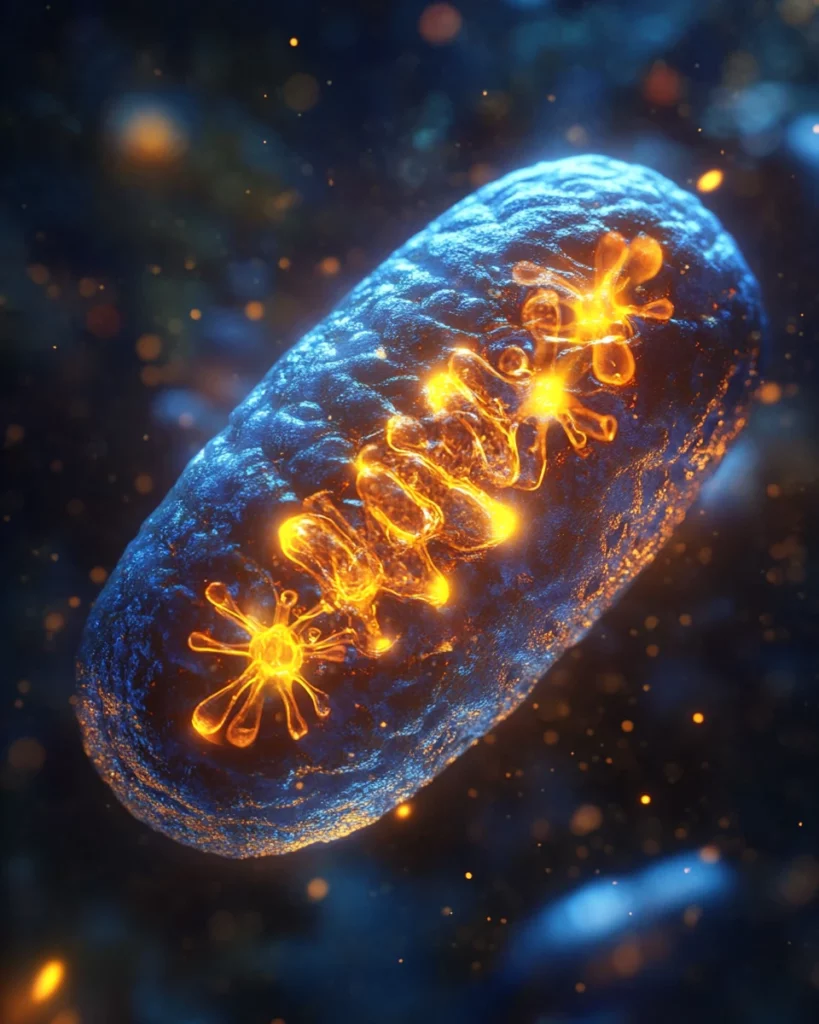
Anti-aging medicine is looking for ways to slow down aging at the cellular level. One of the promising directions is to support the work of mitochondria, the “energy stations” of the cell.
Pyrroloquinolinequinone (PQQ) is a relatively new vitamin-like substance that has attracted the attention of scientists due to its ability to stimulate the formation of new mitochondria (mitochondrial biogenesis).
In this review article, we will look at what is known about PQQ, compare its effects with other mitochondrial activators (coenzyme Q10, resveratrol, NAD+, alpha-lipoic acid), and discuss the use of PQQ in anti-aging and dermatology.
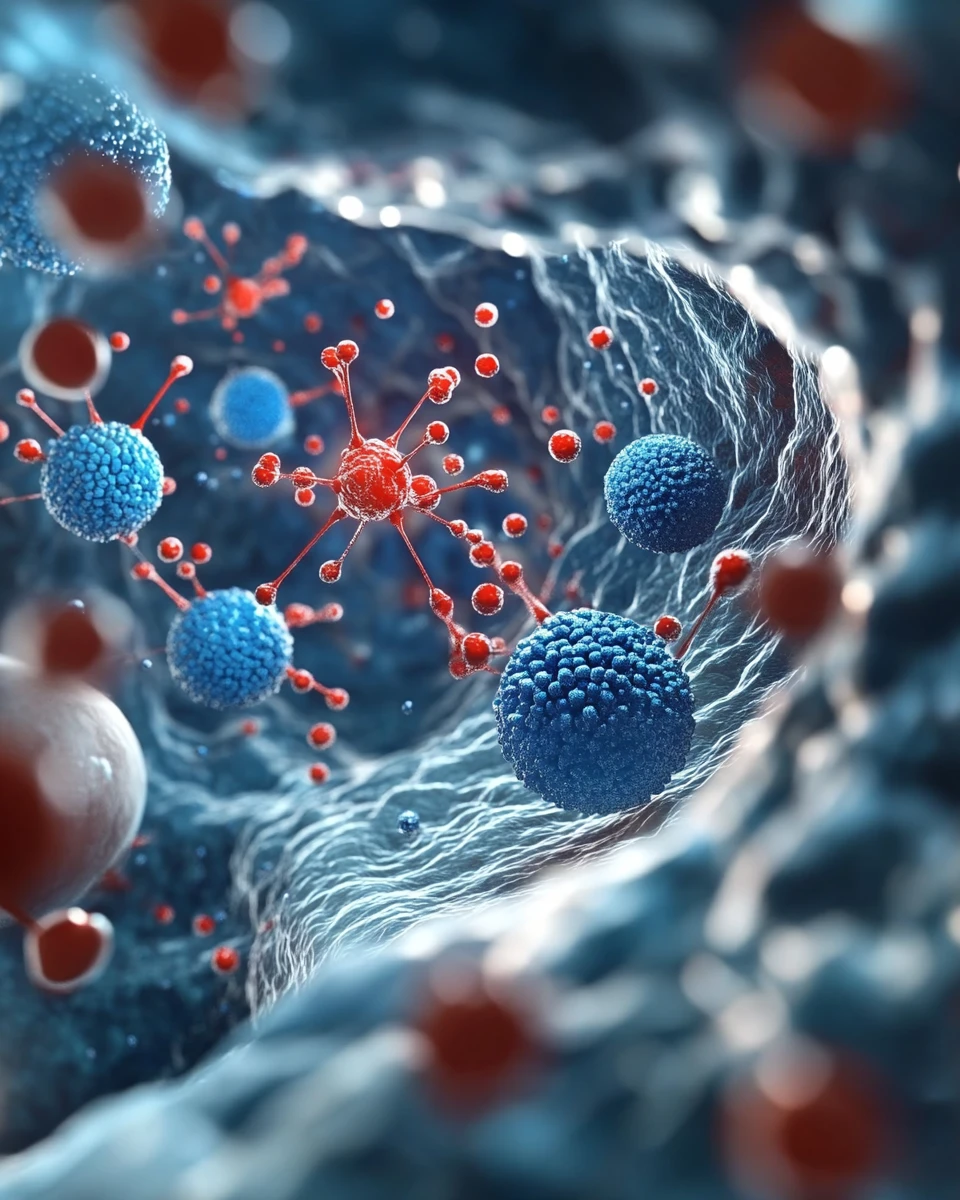
What is PQQ and why is it called vitamin-like?
PQQ (pyrroloquinolinequinone) is a small molecule from the quinone group found in some plant foods (e.g. fermented soybeans, kiwifruit) and even in space dust. PQQ acts as an enzyme cofactor in bacteria, and in mammals exhibits vitamin-like properties.
It is sometimes categorized as a “vitamin-like” compound because a lack of PQQ in the diet in animals results in vitamin deficiency-like symptoms that are reversible with PQQ supplementation.
It has been shown in experiments that the absence of PQQ reduces the number of mitochondria and the activity of genes related to their work.
PQQ has powerful antioxidant properties and is involved in a variety of biological processes – affecting reproduction, growth and aging.
For these qualities, renowned biochemist Bruce Ames suggested that PQQ should be considered one of the “longevity vitamins”: “PQQ is promising as a longevity vitamin in humans. It is necessary for mitochondrial health” – ”PQQ is promising as a longevity vitamin in humans. It is necessary for mitochondrial health.”
Although PQQ is not formally recognized as a vitamin, one thing is clear: this compound plays an important supporting role in metabolism, especially when it comes to protecting cells from age-related disorders.

Mitochondria, aging and skin
Mitochondria produce energy (ATP) and are involved in the regulation of metabolic processes, reactive oxygen species (ROS) levels and programmed cell death. As we age, mitochondria accumulate damage and work less efficiently.
Mitochondrial dysfunction is associated with a number of age-related diseases, from neurodegeneration to diabetes, and is considered a key factor in the body’s aging process.
The skin, as the largest organ, also suffers from age-related changes in mitochondria. Skin aging is accompanied by a decrease in cellular energy production, accumulation of oxidative stress damage, and an increase in the number of “senescent” cells (senescent cells) in the tissue.
As a result, epidermis renewal slows down, collagen and elastin production decreases, which leads to wrinkles, dryness and loss of skin elasticity.
Keeping mitochondria healthy can slow these processes. For example, in mice with genetically accelerated skin aging (Bmi-1 gene knockout), PQQ supplementation markedly improved skin health: dermis became thicker, collagen became more organized, and the number of aging markers and oxidative damage in cells decreased.
The researchers noted that PQQ in this model increased cell proliferation and reduced the proportion of senescent skin cells by reducing oxidative stress.
In other words, protecting mitochondria and enhancing their function promotes skin tissue rejuvenation.
It is important to realize that skin ages both from external factors (UV radiation, ecology) – this is photoaging, and from internal factors (chronological aging).
Mitochondria are involved in both processes, so acting on them is seen as a promising strategy in dermatology: stimulating the formation of new mitochondria and improving their function can enhance skin regeneration and cell resistance to stressors.
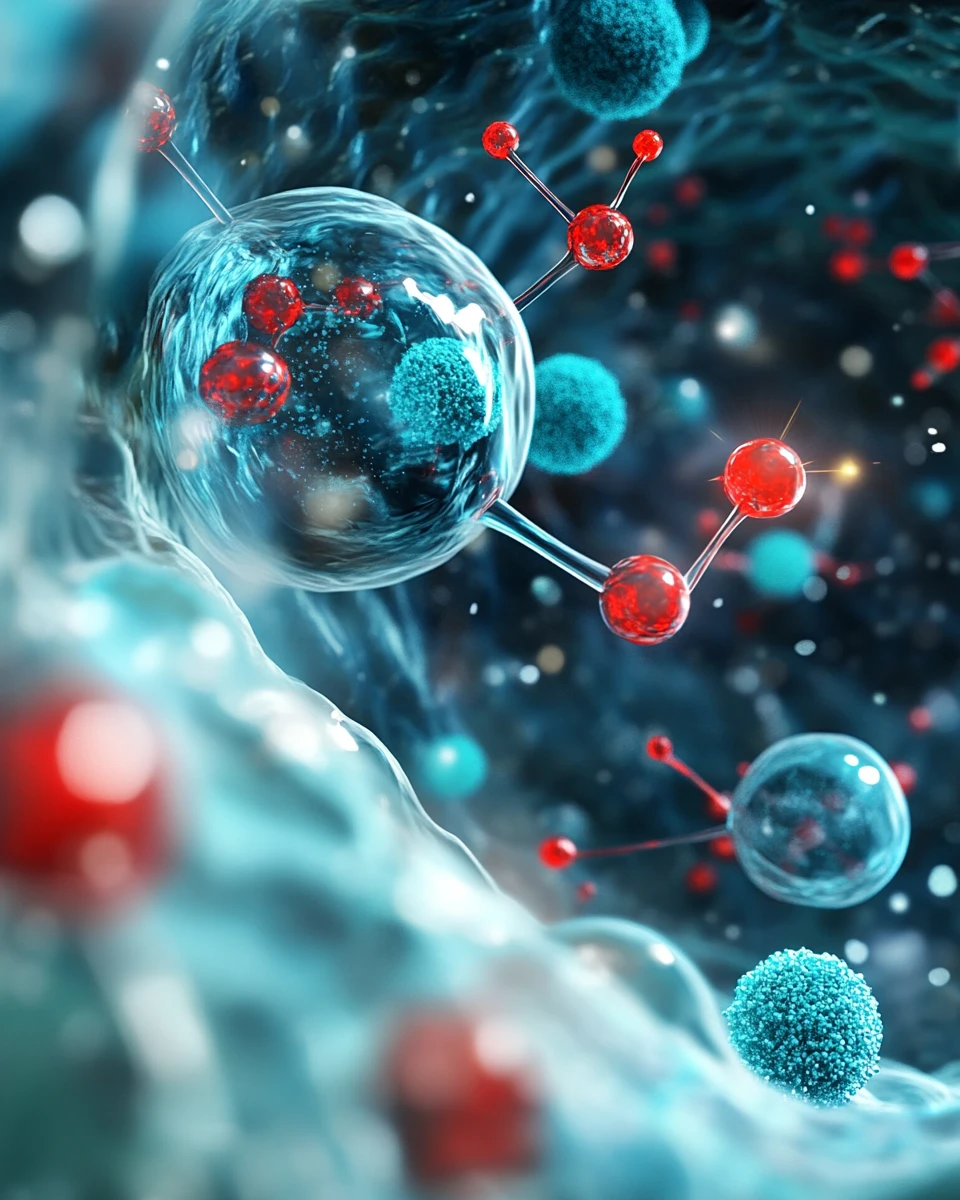
PQQ as an activator of mitochondrial renewal
One of the most unique properties of PQQ is its ability to stimulate mitochondrial biogenesis, i.e. the formation of new mitochondria in the cell.
If coenzyme Q10 can be compared to “engine oil” – it improves the work of existing mitochondria, PQQ – “increases the number of engines themselves”, forcing cells to build new energy stations.
As experts note, CoQ10 optimizes mitochondrial function, while PQQ activates genes responsible for the creation of new mitochondria, their protection and repair.
The mechanism of this action is being intensively studied. In cell and animal models, PQQ activates key regulators of biogenesis: it increases the expression of PGC-1α (coactivator, “main switch” of new mitochondria formation), as well as factors NRF1, NRF2, TFAM, which are responsible for mitochondrial protein and DNA synthesis.
Interestingly, PQQ can also influence longevity signaling pathways – for example, by stimulating sirtuin (SIRT1) activity through an increase in NAD+ levels.
In a 2017 study, PQQ was shown to activate the SIRT1/AMPK-dependent pathway that triggers PGC-1α, thereby enhancing the formation of new mitochondria.
In addition, PQQ directly neutralizes free radicals and protects existing mitochondria from damage.
This dual role – antioxidant + mitochondrial stimulator – makes it valuable for maintaining cellular energy. As a result, cells with PQQ perform better, accumulate less damage, and retain function longer.
For example, adding PQQ to the diet of old mice improved their metabolism and reduced inflammation and oxidative stress; the mice showed slower muscle atrophy and even improved skin and coat condition.
And in an experiment on nematode worms, PQQ extended average lifespan by ~30% immediately-an impressive result, albeit in a simple model.
From the point of view of anti-ageing medicine practice, PQQ is already attracting attention as a promising nutraceutical.
Popular Science Review 2024 advises including 10-20 mg of PQQ daily in a youth extension program (this dose is commonly used in dietary supplements).
The European agency EFSA approved PQQ as a dietary supplement back in 2018, recognizing its safety at reasonable doses. Human clinical trials also show good tolerability: in one study in elderly volunteers, 21.5 mg of PQQ daily for 12 weeks improved memory and attention without side effects.
These data demonstrate the safety profile of PQQ and support its potential benefits.
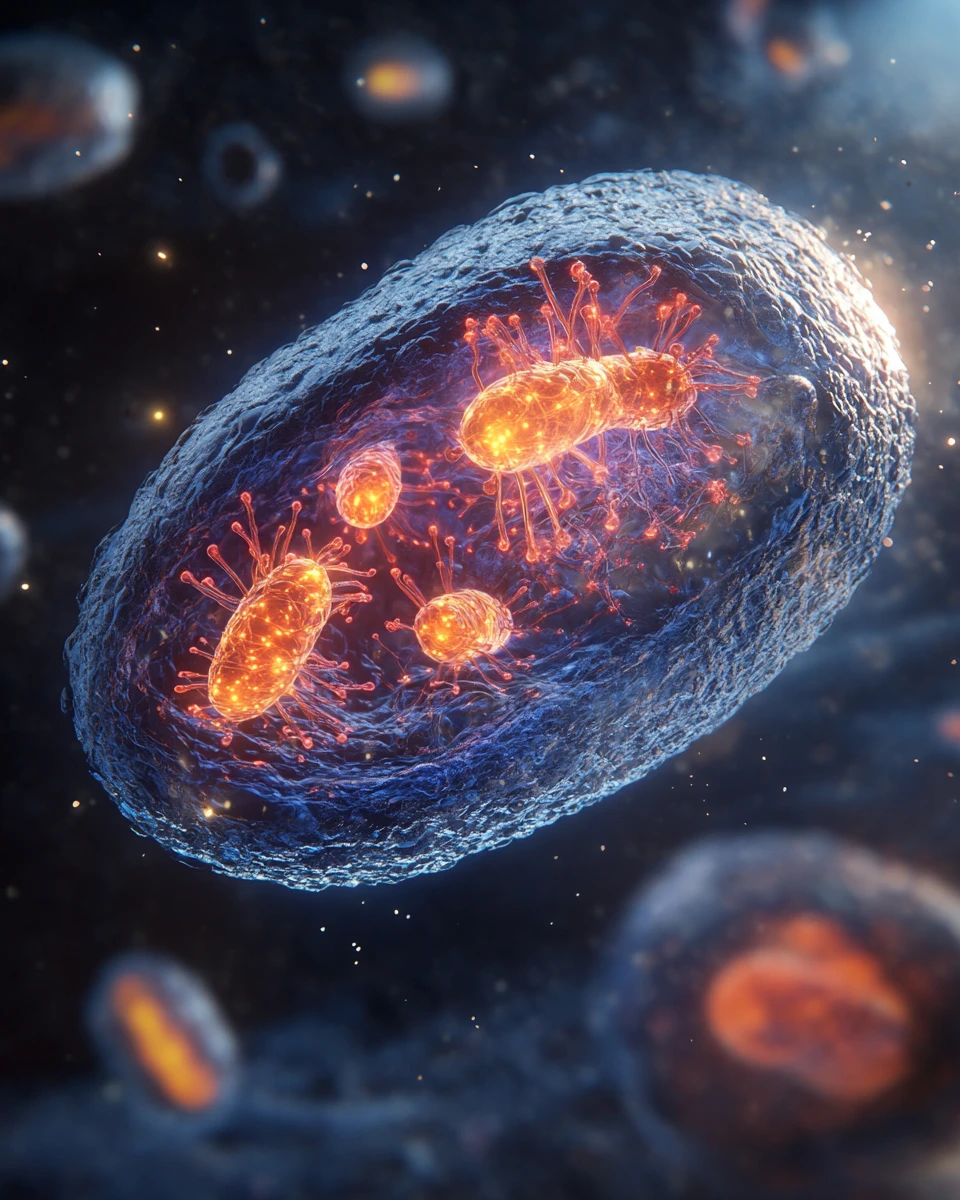
Comparison of PQQ with coenzyme Q10 and other mitochondrial activators
PQQ is not the only nutrient that affects mitochondrial function. Various substances are already used in anti-ageing medicine to support cellular energetics. Let us briefly review the most well-known ones and compare them with PQQ (summarized in Table 1):
- Coenzyme Q10 (ubiquinone): A key cofactor of the mitochondrial electron transport chain, essential for ATP synthesis. It is a powerful antioxidant, stabilizes mitochondrial membranes. CoQ10 improves energy exchange in aging cells, but does not create new mitochondria by itself. CoQ10 levels decline with age, so supplementation has been linked to improved heart and brain function and reduced fatigue. In dermatology, coenzyme Q10 is known as a component of anti-wrinkle creams: it reduces the signs of photoaging through antioxidant action and support for skin cell metabolism. For example, topical application of CoQ10 has been observed to reduce the depth of fine lines and improve the smoothness of facial skin.
- Resveratrol: Natural polyphenol from grapes, red wine. “Mimetic” of calorie restriction, a known activator of sirtuin SIRT1. Due to this resveratrol enhances mitochondrial biogenesis – in various tissues it increases the activity of AMPK, SIRT1 and PGC-1α, leading to an increase in the number of mitochondria. It also has anti-inflammatory and antioxidant effects. In animal studies, it improved endurance, heart function, and slowed some markers of aging. However, the bioavailability of resveratrol is low, and clinical effects in humans are weak (most data are laboratory-based). In skin care, resveratrol is used as an antioxidant to protect against UV damage and pigmentation. It has been noted that when applied topically, it stimulates collagen production and reduces UV damage to cells, contributing to the prevention of photoaging.
- NAD+ and its precursors: Nicotinamide-adenine dinucleotide is a coenzyme involved in virtually all metabolic reactions and is essential for the function of mitochondria and longevity enzymes (sirtuins). NAD+ levels decline with age, which is associated with the development of age-related diseases. Increase of NAD+ (for example, by taking precursors – nicotinamide riboside, NMN, or common vitamin B3 – niacinamide) contributes to improvement of mitochondria work and activation of repair processes in the cell. In experiments, replenishment of NAD+ improved muscle function, metabolism and even prolonged the life of animals. Niacinamide (vitamin B3) is particularly interesting for the skin – it increases NAD+ levels locally, reducing the accumulation of DNA damage and enhancing repair. Clinically, 5% niacinamide in creams improves barrier function, reduces fine lines and hyperpigmentation, and is therefore included in anti-aging cosmetics. Thus, NAD+ -strategies and PQQ act in some sense synergistically: PQQ can increase the activity of NAD-dependent enzymes (through its effect on lactate dehydrogenase), and increasing the level of NAD+ itself enhances the effects of mitochondrial biogenesis, which PQQ leads to.
-
Alpha-lipoic acid (ALA): A versatile antioxidant present in mitochondria as a cofactor of energy metabolizing enzymes (pyruvate dehydrogenase complex). ALA is known for its ability to regenerate other antioxidants (vitamins C and E) and reduce oxidative stress. In animal and human studies, alpha-lipoic acid improved insulin sensitivity, reduced inflammation and markers of vascular aging. Although ALA does not directly stimulate the formation of new mitochondria, it protects existing mitochondria from damage and thus indirectly supports cellular energy. In dermatology, ALA is used both in supplements and externally. Topical application of 5% ALA has been shown to improve skin texture and reduce fine lines and wrinkles (by activating enzymes involved in collagen renewal) according to small studies. In addition, alpha-lipoic acid reduces glycation, the “sugar aging” process of collagen, thereby maintaining skin elasticity.
Table 1. Comparison of PQQ and similar substances (mitochondrial activators)
| Connection | Main mechanisms of action | Anti-ageing effects and applications in dermatology |
|---|---|---|
| PQQ (pyrroloquinolinequinone) | – Stimulates mitochondrial biogenesis (↑PGC-1α, SIRT1, AMPK) – Direct antioxidant, protects mitochondria from ROS – Increases growth factor (NGF) activity and cell metabolism |
– Improved cellular energy, increased endurance – Neuro- and cardioprotective effect, potential as a “vitamin of longevity” – Skin: reduces oxidative stress, stimulates cell renewal; when applied topically, reduces wrinkles and improves skin texture. |
| Coenzyme Q10 (ubiquinone) | – Cofactor of the mitochondrial respiratory chain (electron transfer for ATP synthesis) – Membrane antioxidant, stabilizes mitochondrial membranes – Improves energy production in conditions of CoQ10 deficiency |
– Increase in performance, support of the heart (reduces heart failure) – Slow neurodegeneration (in Parkinson’s disease, ALS – experimental data) – Skin: antioxidant effect, reduction of wrinkles and photodamage with long-term use (both in creams and orally) |
| Resveratrol | – Activation of SIRT1 enzyme (“longevity gene”), triggering AMPK -> PGC-1α cascade – Antioxidant, reduces inflammation (inhibits NF-κB) – Modulates expression of stress genes, including FOXO, p53 |
– Improved metabolic profile, vascular protection (increases arterial elasticity) – Potentially increases longevity (in model organisms) – Skin: protection against UV-induced damage, stimulation of collagen synthesis; reduction of photopigmentation when applied topically (often included in serums/creams as an antioxidant) |
| NAD+ (nicotinamide-adenine dinucleotide) and its precursors | – A key cofactor in redox reactions in mitochondria – Required for sirtuins, PARP and other DNA repair enzymes – Increased NAD+ levels activate energy metabolism and autophagy pathways |
– Improving mitochondrial function, slowing age-related metabolic changes (improved glucose tolerance, reduced inflammation) – Prevention of age-related cognitive decline (in trials with nicotinamide riboside) – Skin: niacinamide (vitamin B3) – precursor to NAD+ – improves skin barrier, reduces wrinkles and blemishes; NAD+ supports DNA repair and reduces the risk of actinic keratoses and non-melanoma skin cancer |
| Alpha-lipoic acid (ALA) | – Cofactor of mitochondrial complexes (pyruvate dehydrogenase), improves glucose metabolism – Universal antioxidant (fat and water soluble), regenerates vit. C and E – Metal chelator, reduces oxidative stress in the presence of iron/copper ions |
– Improvement of insulin sensitivity, reduction of systemic inflammation (used in diabetes, non-alcoholic fatty liver disease) – Neuroprotection (reduces symptoms of diabetic neuropathy) – Skin: included in creams as an antioxidant; 5% ALA cream in small studies has shown in small studies to reduce fine lines and pores, improve skin tone. Also ALA reduces collagen glycation, which slows wrinkle formation |
(Note: NAD+ itself is not ingested; its direct precursors nicotinamide riboside, nicotinamide mononucleotide (NMN), or niacin are used as supplements.)
As can be seen from the table, PQQ is favorably distinguished by its complex action: it both stimulates mitochondria reproduction and protects them from damage. CoQ10 rather supports existing mitochondria, resveratrol and NAD+ indirectly trigger similar pathways of biogenesis, and alpha-lipoic acid mainly works as an antioxidant. Ideally, these remedies can complement each other, and it is not uncommon to combine them. For example, the combination of PQQ + CoQ10 is seen as synergistic: in one study, supplementing 20 mg of PQQ with 300 mg of CoQ10 improved cognitive function in older adults better than CoQ10 alone. Also, together they provide both “new engines” and fuel for them. Overall, PQQ may have a place in this lineup of mitochondrial geroprotectors.
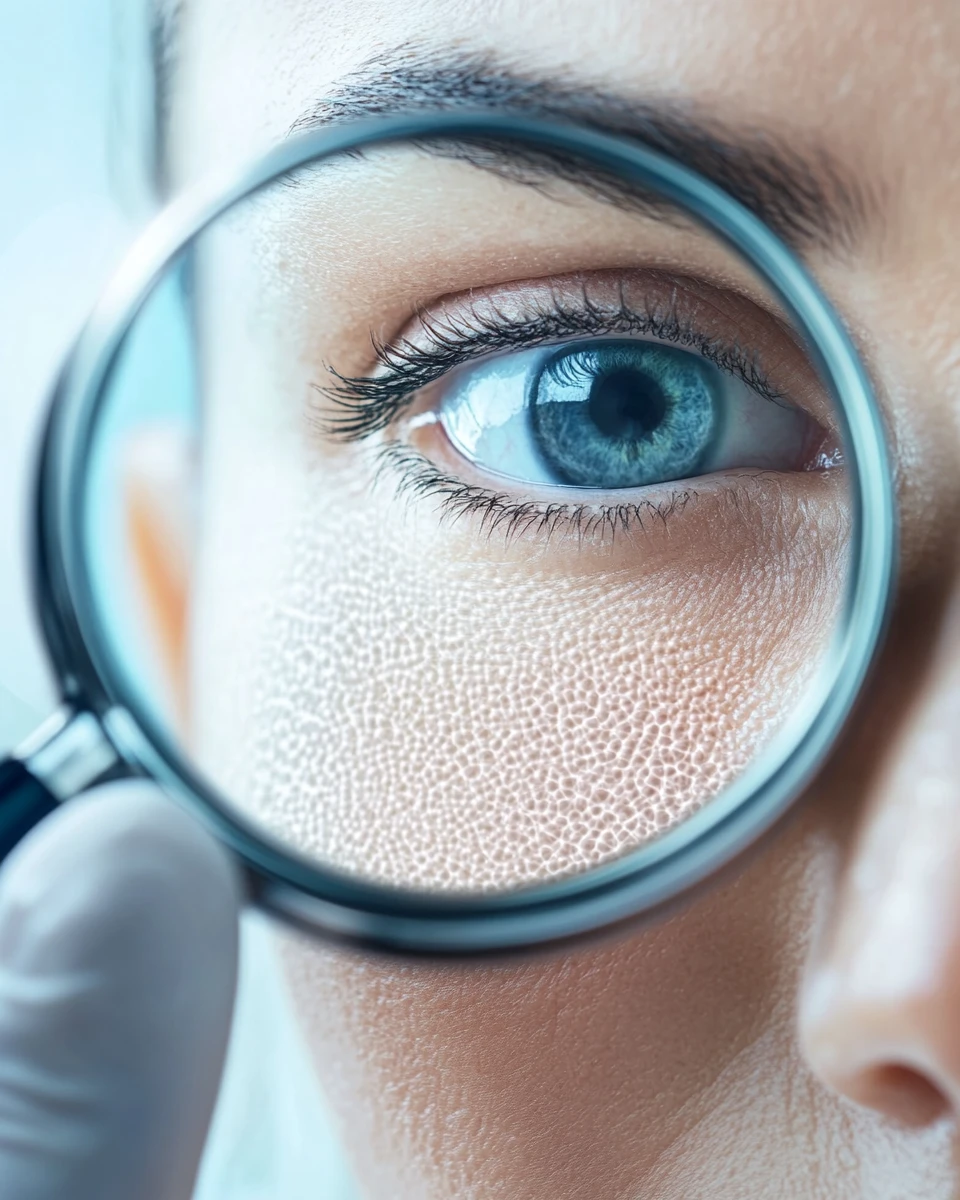
Application of PQQ in anti-ageing medicine
Systemic effects of PQQ. Due to its properties, PQQ is seen as a promising supplement to support health in aging. So what data is available to date?
- Metabolic health and muscle. In a 2024 paper, scientists tested PQQ on old mice: after 10 weeks of supplementation, the animals slowed aging – improving body composition (less loss of muscle mass and fat), reducing chronic inflammation in muscles, and increasing paw grip strength. Most interestingly, PQQ prevented skeletal muscle atrophy and weakness associated with aging (probably by improving mitochondrial function in muscle cells). The authors concluded that PQQ may be part of healthy aging strategies to help maintain muscle tone and metabolism.
- Cognitive function and the nervous system. The brain is very dependent on mitochondrial energy, and PQQ has shown itself to be neuroprotective. In Japan, a randomized placebo-controlled study was conducted on elderly people with memory complaints: 64 participants received PQQ (21.5 mg per day) or placebo for 12 weeks. Memory scores (Cognitrax test) – including verbal and figurative memory, attention and reaction speed – improved significantly in the PQQ group over this period. The MMSE (classical cognitive ability test) total score also increased, indicating an improvement in memory and attention. Importantly, no side effects were noted, and subjects also noted a reduced sense of stress and improved well-being. These results are consistent with the idea that PQQ supports the energy metabolism of neurons and protects them from age-related damage. Other studies in animal models of Alzheimer’s disease have also shown that PQQ reduces brain damage, reduces amyloid plaque toxicity, and improves cognitive function.
- Heart and blood vessels. PQQ exhibits cardioprotective effects. In experiments on rats, PQQ supplementation protected the heart from ischemic damage, reduced the size of myocardial infarction and improved recovery of cardiac function. This is attributed to the activation of mitochondrial defense genes in cardiomyocytes and a reduction in oxidative stress. In addition, PQQ improved lipid profile and reduced fat deposition in liver and blood vessels in dietary obesity models. Thus, for the cardiovascular system, PQQ may be useful as a prophylactic agent to improve the energy metabolism of the heart muscle and protect blood vessels from damage.
- Inflammation and immunity. Chronic “silent” inflammation is one of the drivers of aging (inflammation). PQQ has shown the ability to reduce levels of pro-inflammatory cytokines. In a small pilot study in adults, taking ~20 mg of PQQ for just 3 days resulted in lower levels of C-reactive protein (CRP) and interleukin-6, markers of inflammation. This rapid effect is surprising and suggests a powerful effect of PQQ on inflammatory pathways. It is thought to modulate the function of NF-κB and other factors responsible for cytokine synthesis. In addition, improved mitochondrial function itself leads to a reduction in oxidative damage products that trigger inflammation. Thus, PQQ may help to reduce systemic inflammation, which is also beneficial for the skin (chronic inflammation is known to accelerate skin aging and impair collagen synthesis).
To summarize, PQQ works in several directions important for anti-aging medicine: it improves energy balance, reduces oxidative stress and chronic inflammation, and supports brain, muscle, and heart function. Of course, PQQ is not an “elixir of immortality,” and aging is a complex, multifaceted process.
But including PQQ in a comprehensive healthy aging program seems reasonable. Already, some gerontologists and integrative physicians are recommending the PQQ to their patients.
It is important to remember that the best results are achieved when combined with other measures: a balanced diet, physical activity, stress control and, if necessary, other nutraceuticals (including the same CoQ10, B vitamins to support NAD+, omega-3, etc.).
PQQ in dermatology: skin health and youthfulness
Pyrroloquinolinequinone (PQQ) is a promising vitamin-like substance that is being actively studied in dermatology due to its ability to improve mitochondrial function in skin cells, which directly affects skin health and youthfulness.
External application (cosmetology)
Studies in 2023 with alnyl-PQQ cream (stabilized form of PQQ) showed significant results in the correction of photoaging.
Already after 4 weeks of daily application there was an improvement in skin texture, reduction of dullness and fine lines.
By the 12th week, the effect intensified: deep wrinkles were reduced, pigmentation improved, and histological analysis confirmed a significant reduction in signs of solar elastosis (damage to the skin’s elastic fibers).
PQQ cream also outperformed vitamin C cream, showing a more pronounced effect on epidermal renewal processes and protection against oxidative stress.
Antioxidant protection and healing
PQQ exhibits pronounced antioxidant properties, protecting skin cells (keratinocytes and fibroblasts) from UV damage and stimulating their repair.
Animal studies have confirmed PQQ’s ability to reduce DNA damage markers, indicating its geroprotective effect and ability to slow down skin cell aging.
Internal use and skin
Although there are few direct studies of oral PQQ supplementation for human skin improvement, the experimental data are encouraging.
In elderly animals, PQQ supplementation has been shown to improve skin and coat appearance, which may be related to a general rejuvenating effect, improved mitochondrial function and reduced systemic inflammation.
PQQ supplements are already positioned to improve skin, hair and nails, but there is not enough scientific data to confirm these effects.
Opinion of experts
Experts in the field of anti-ageing dermatology positively assess the potential of PQQ.
Dermatologists note that topical application of PQQ effectively supports energy metabolism and regenerative processes in the skin, while nutritionists consider this substance a promising component of nutricosmetics of the future.
Conclusion
PQQ is a new ally in the fight against aging. Its ability to revitalize the “energy factories” of our cells opens up interesting prospects for prolonging the youthfulness of the body and skin.
Unlike many touted supplements, PQQ’s effects are backed by scientific studies, from improving memory and muscle strength in the elderly to slowing skin atrophy in models of rapid aging.
For the dermatologist, PQQ is interesting as a component that influences the fundamental processes of skin aging – energy metabolism and oxidative stress. The first successful results of using PQQ-esters in anti-photo-aging creams have already been obtained.
Of course, there are still many questions ahead. Large clinical studies are needed to determine how effective and safe long-term use of PQQ is, what dosage is optimal, and how best to combine it with other anti-aging therapies.
But it is already clear that PQQ has a unique combination of properties – it is simultaneously a vitamin-like factor, an antioxidant and a stimulator of cellular “energy stations” renewal. This profile of action is extremely valuable in the context of gerontology.
For the patient interested in healthy longevity, the advice remains the same: the basics of anti-aging are lifestyle, and supplements only help to unlock the body’s potential. PQQ is just such a helper, giving cells a “second breath”.
As a dermatologist, I see a future in which skin aging therapies become more science-based, targeting deep mechanisms rather than just outward appearances. And PQQ is a prime example of how advances in biochemistry can be transformed into new approaches to beauty and skin health.
In the coming years, we will likely hear more about PQQ research, new formulas of creams and supplements with it will appear.
But already now, based on the available data, PQQ can be recommended as part of a comprehensive anti-aging program – of course, taking into account individual indications and under the supervision of a doctor. Mitochondria are the key to youthful cells, and taking care of them with substances such as PQQ can help us keep our skin healthy and youthful for a longer period of time.
Literature
-
Chowanadisai W., et al. “Pyrroloquinoline-Quinone Is More Than an Antioxidant: A Vitamin-like Accessory Factor Important in Health and Disease Prevention.” Nutrients, 2021 pmc.ncbi.nlm.nih.gov
-
McCulloch M. “PQQ Revitalizes Aging Cells.” Life Extension Magazine, Oct 2024 lifeextension.com
-
Draelos Z.D., et al. “Evaluation of a Topical Allyl PQQ in Photodamage.” J Clin Aesthet Dermatol, 2023;16(4):53-59 pubmed.ncbi.nlm.nih.gov
-
Mohamad Ishak N.S., et al. “Dietary PQQ hinders aging progression in male mice and D-galactose-induced cells.” Front. Nutrition, 2024 pmc.ncbi.nlm.nih.gov
-
Zhang L., et al. “Repression of the Antioxidant PQQ in Skin Aging Induced by Bmi-1 Deficiency.” Oxid Med Cell Longev, 2022 pmc.ncbi.nlm.nih.gov
-
Nalbant M.A., Eroglu O. “Effects of PQQ and CoQ10 on Mitochondrial Genes and Cellular Properties in HepG2.” Cell Mol Biol, 2023 pubmed.ncbi.nlm.nih.gov
-
Ames B.N. “Prolonging healthy aging: Longevity vitamins and proteins.” PNAS, 2018 pmc.ncbi.nlm.nih.gov
-
Marcone P. “Generate Fresh Mitochondria with PQQ.” Life Extension Magazine, 2011/Reviewed 2024 lifeextension.com
-
Kouka P., et al. “Resveratrol and Mitochondrial Biogenesis in Neurodegenerative Diseases.” Int J Mol Sci, 2023 pmc.ncbi.nlm.nih.gov
-
Figueroa L., et al. “The Role of Coenzyme Q10 in Skin Aging and Topical Intervention.” J Clin Aesthet Dermatol, 2023 pmc.ncbi.nlm.nih.gov
-
Stites T., et al. “Activation of mitochondrial biogenesis by pyrroloquinoline quinone.” J Biol Chem, 2006 (additional background) lifeextension.com


